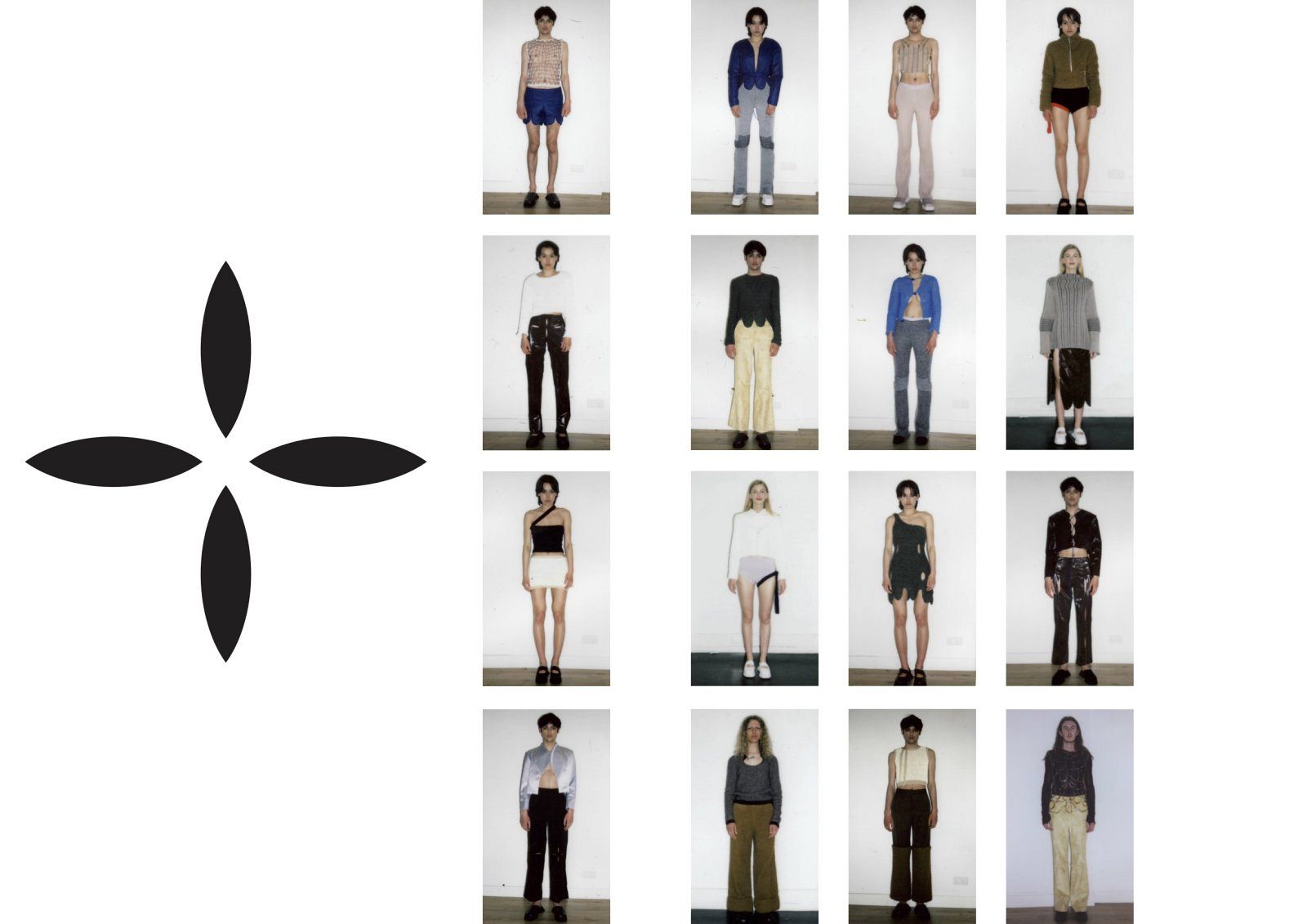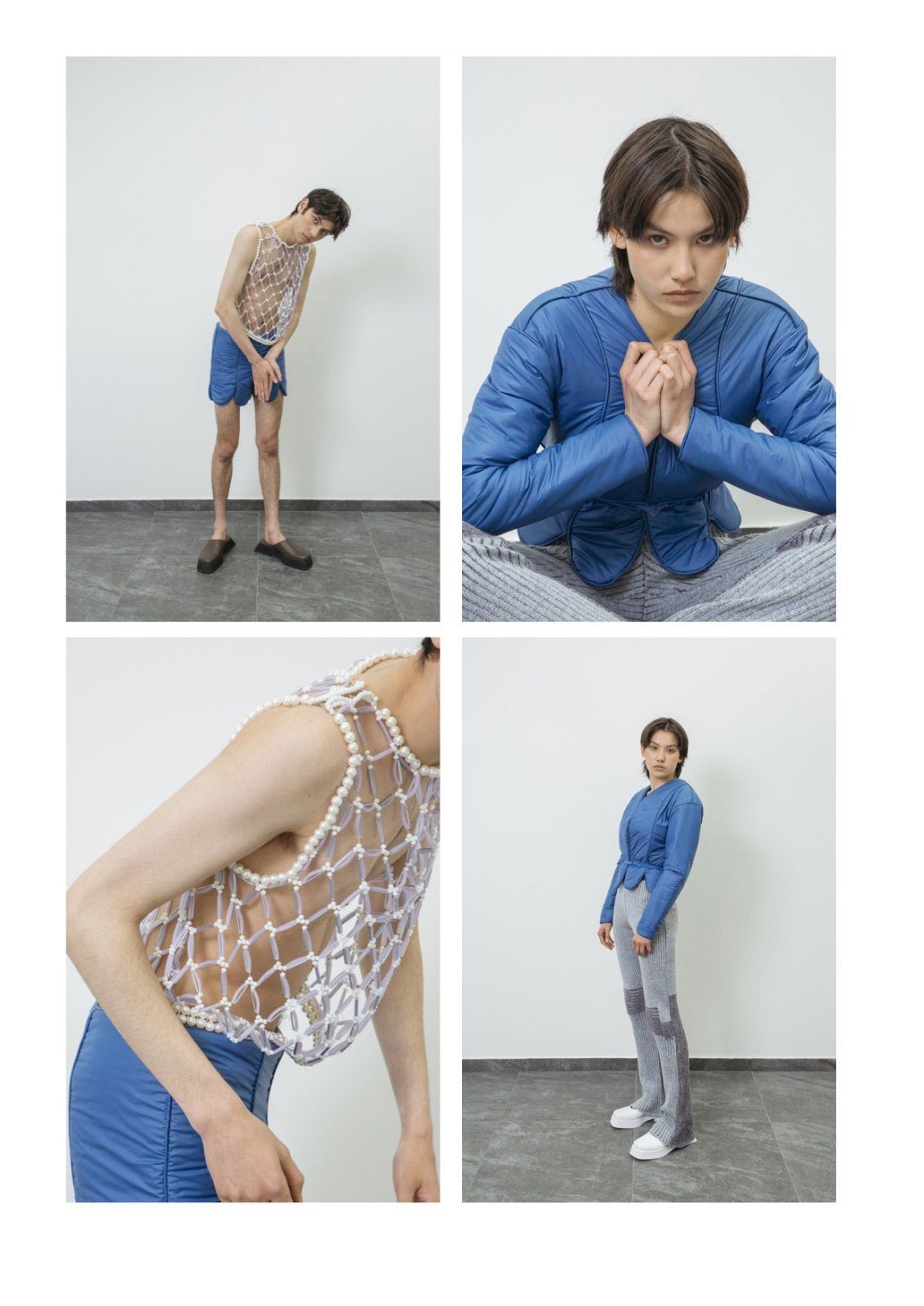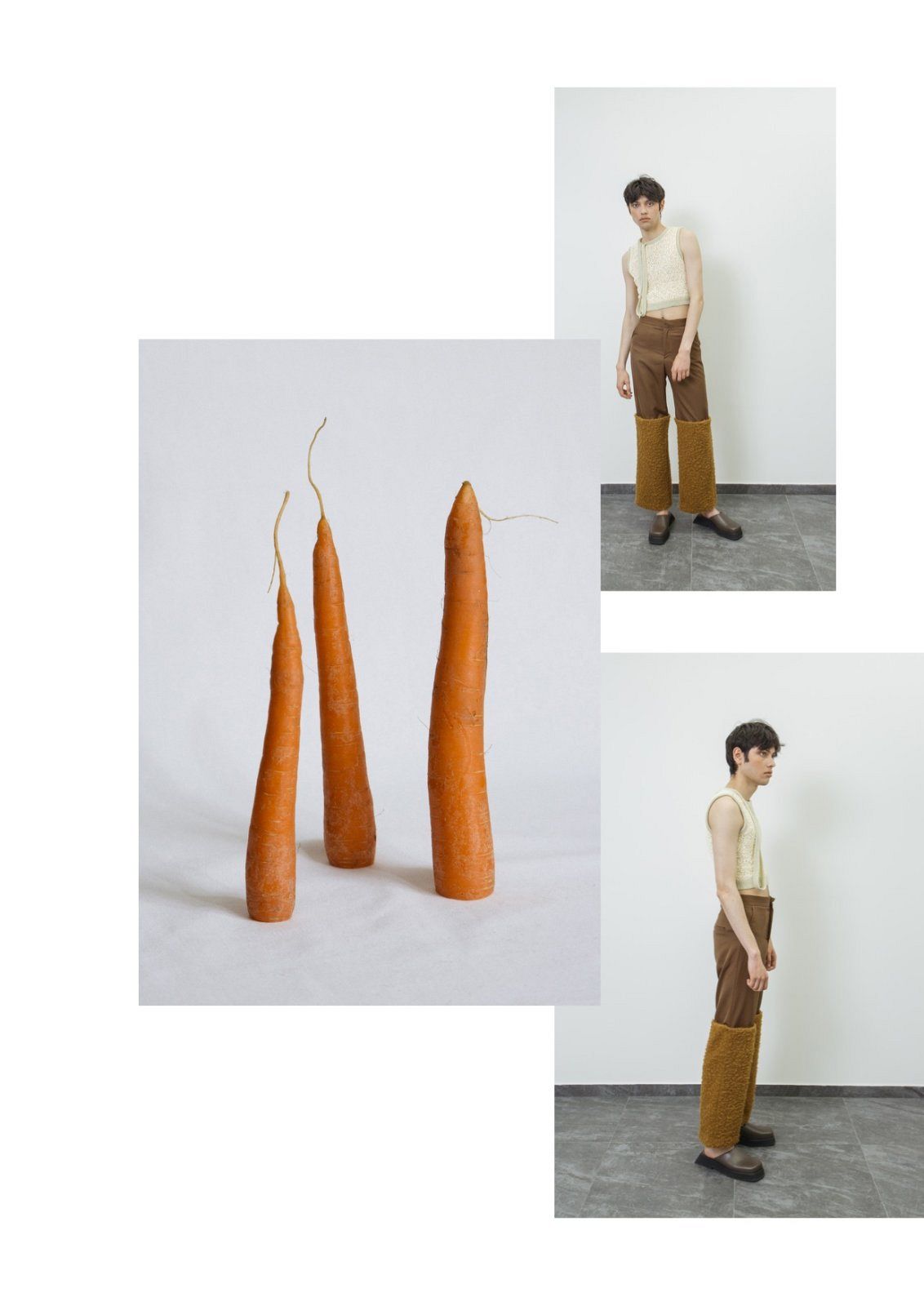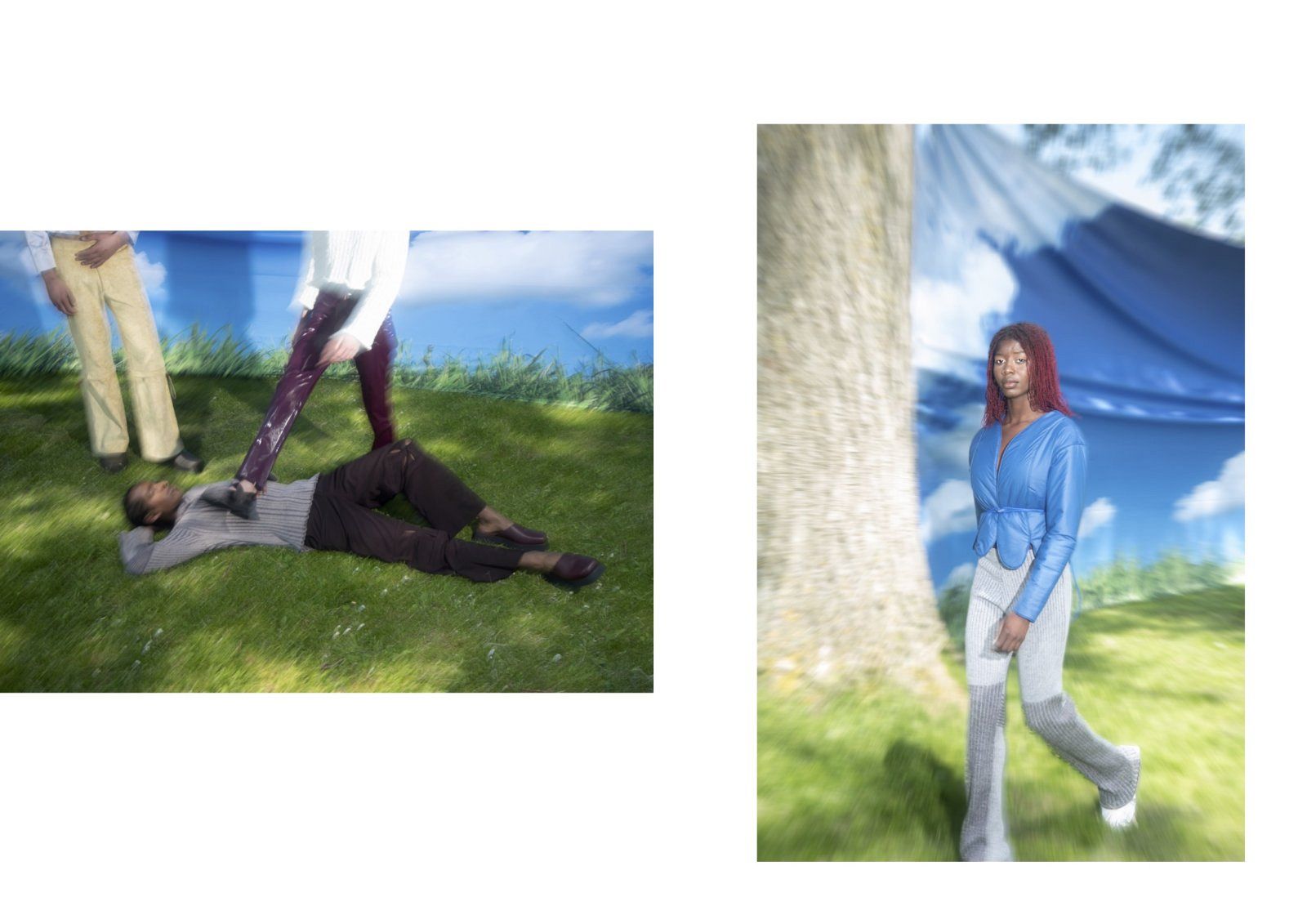
Jiahao Li
Internship: Maison Tricot
We are intrigued by the historical impact of “knowing or not knowing what one is supposed to know” and the complex social messages and messaging it has created.
A strong focus on dagging with a series of decorative scallops or foliations along the edge of a garment combined with formal jackets and knitwear.
We want to break the stigma of the fetishism and sexually driven visual language: we looked into the historical context of fetishism and move into a new kink and out of the mainstream fetish community.
It was about rethinking an object/codpiece out of a new material, deconstructing the practicality into something decorative, associated with follies.
By implementing a sassy, surreal, and sexless vision, we reflect on the world with irony, parody and pastiche.
We are exploring the use of material - inspired by the erotic fetish world: Rubber band, latex yarn and resin; they adopt a different form to contrast with the elasticity of the body itself.
Juxtaposing rubber band and latex yarn in different techniques that create different textures that enhance the duality between flimsy and solid.
We exercise traditional craft executed with unconventional materials and mix them with archetypes from our everyday wardrobe. We progress into a mix of humorous improvisation, mistakes blend with technical skills. It results in designs that are built on ambiguous contrasts within the invisible rather than visible.
The collection comprises the daily wardrobe with strange cutting that combine silhouettes with rubber in different forms.
Materiality and practicality meet emotions, textures, lines and shapes to structure the shapes.
Returning to the most basic elements— a curve, a line, a cut. Guided by materials.








YOUR SLAVE, MY MASTER.
Thesis
The concept of sexy is closely linked to fetishism. Corsets, tights, garters, high heels, people's love for them or inherited love from the lack of sexual repression, the obsession with body shaping, has brought no less pain in history than joy. In the modern era, popular idols and fashion brands borrow these same symbols to play with self-expression and express dissent, emphasizing women's self-affirming and liberating consciousness of sexual desires, and actively challenging the cultural order.
If we look closely at ourselves, we will find ourselves more or less obsessed with some things. Some people like silk sheets, some people like cotton clothes, some people like to smell the pillowcase they slept on, and they can't wait to travel with them. These little habits and fetishes that dissolve in our daily lives, have you ever wondered if it's our fetish that is at work? “Fetish" carries a certain secret sexual connotation and desire, it belongs to the uniqueness that is human love and fetish.
If the body that stimulates and feels sexual pleasure is sinful and shameful, so such it should be covered up; while also denying desires, people will therefore suppress the optimism of life. Pessimism has become the keynote of life, and denying sexual desire is vital to life. The most imminent feeling of pessimism. If this is something personal, something that needs to be hidden, how can we live with it, how much is it really in our lives? Using all these examples, this thesis explains that sex actually is around us everywhere. In art, in fashion and in food.